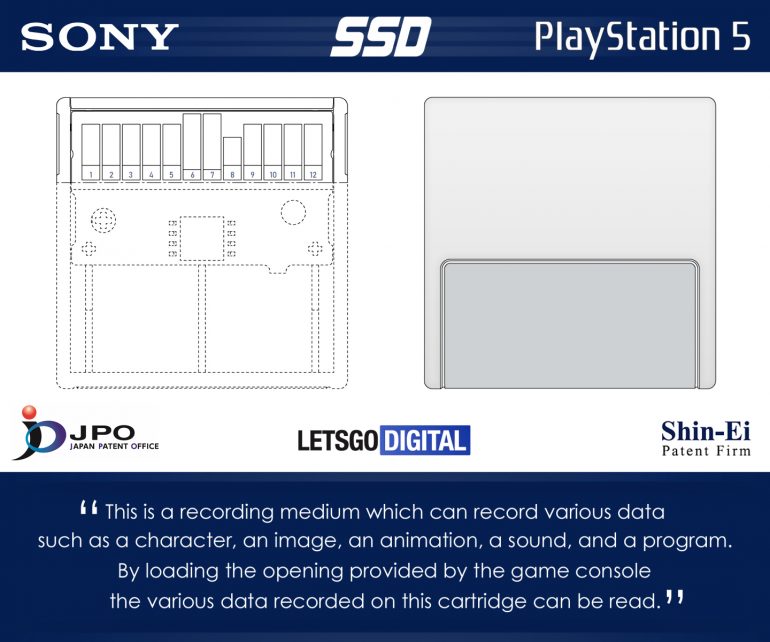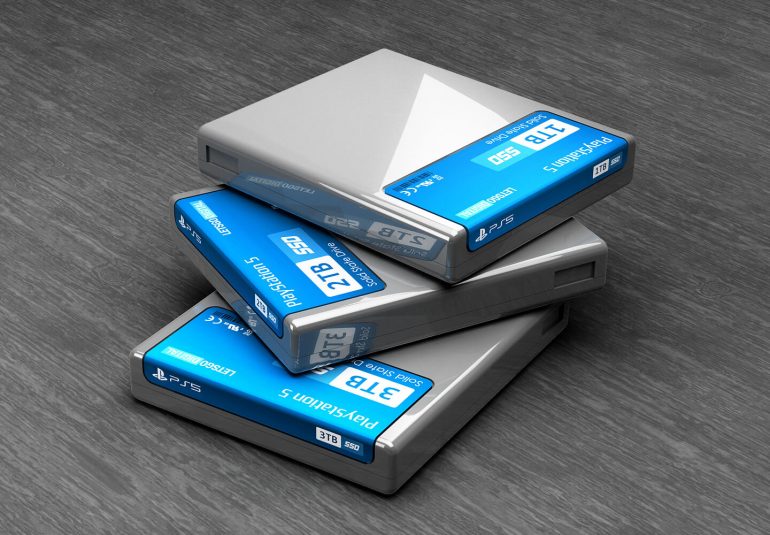Leak Provides More Clues About The Mysterious New PS5 Feature Everyone's Talking About
A report a few days ago revealed that Sony invented a mysterious device that looks a lot like a game cartridge that might fit a handheld console. But Sony isn't likely to launch a new handheld console of its own alongside the PlayStation 5. Speculation that followed said the logical use for a cartridge like this would be to actually house Sony-made SSDs that could be used to upgrade the PS5's storage with ease. This sort of clever invention would also help keep the PS5's entry-level price down, since it wouldn't need much base storage.
The console will feature several next-gen components, including a custom processor and graphics card, as well as a speedy solid-state drive. Sony is expected to sell the PS5 at or close to cost initially to encourage as many people as possible to upgrade quickly. Since SSDs are still expensive upgrades, especially if you're going for several terabytes of storage, a modular SSD solution would be a huge boost for Sony. Now, it looks like there's even more evidence to suggest the mysterious Sony innovation is indeed related to storage.
Dutch blog LetsGoDigital, which initially uncovered the much talked-about Sony patent in Brazil and then kept chasing the story for clues, found a related patent that Sony filed in Japan about a year ago. The patent was granted in early August and contains an illustration that gives us an even better look at the cartridge.

The device described within the application would feature several connectors on one end, which is something we saw in earlier leaks. But the image above gives us a better view of said connectors. Moreover, a central chip seems to be hinted at as well. But wait... it gets better: The description from the patent is even more exciting than the illustration:
This is a recording medium which can record various data, such as a character, an image, an animation, a sound and a program. By loading the opening provided by the game console with the tip end part by which a variety of pins of this cartridge were provided, the various data recorded on this cartridge can be read.
That's a rather fancy way to describe a storage device without clearly explaining that we're looking at a storage device. What the patent confirms is that we're indeed looking at a storage cartridge here, which was everyone's first guess. Since a handheld console is unlikely, the best explanation for the device is that it's an SSD cartridge for the upcoming PS5.

I've already explained that SSD cartridges could be great, both for customers who require more local storage and for Sony to boost profits. By providing a seamless way to perform SSD upgrades, Sony would prevent any potential problems that could arise and encourage people to spend money on upgrades. There are plenty of SSD formats on the market right now, and not all of them support the same speeds. It could be very confusing and challenging for the average user to upgrade the PS5's SSD with a setup like this.
A Sony SSD enclosure like the one in the concept render above would also give the Japanese giant a way of making more money off of the PS5, and recoup some of the initial losses. It's likely that Sony's proprietary SSD solution for the PS5 would be more expensive than traditional SSDs.
That said, we still don't have any confirmation that the product in these illustrations will actually hit stores in the coming years. For all we know, Sony might not even launch the product. Come next year, Sony will unveil the PS5 in all its glory, at which point we'll know precisely what SSD configurations to expect at launch, and how much they'll cost.
